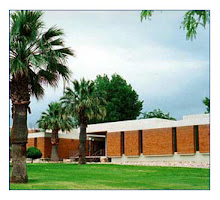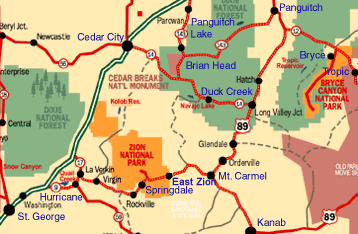 Cinder cone volcanoes within Snow Canyon State Park, near St. George
Cinder cone volcanoes within Snow Canyon State Park, near St. George
Volcanoes are created by internal forces within the Earth that cause heated, melted rock (magma) to rise to the surface. First collecting in magma chambers, some of the magma eventually pushes upward through cracks (vents) to the Earth's surface. As the magma reaches the surface, it loses some of its gases and turns into lava. Volcanoes are created by the release and build-up of lava and other materials. Volcanoes have varied shapes and sizes, but are divided into three main kinds depending on the type of material that reaches the surface and the type of eruption that ensues. One such kind is cinder cone.
A cinder cone is a volcanic cone built almost entirely of loose volcanic fragments, ash, and pumice. Cinder cones are the simplest and smallest type of volcano, built from particles and blobs of congealed lava ejected from a single vent. As the gas-charged lava is blown violently into the air (often hundreds of feet), it breaks into small fragments that solidify and fall as cinders (about ½ inch in diameter) that pile up around the volcano’s vent to form a circular or oval cone shape. The molten rock solidifies instantly, often preserving bubbles created by escaping gasses. If an eruption of this type continues long enough, fragments accumulate layer by layer to form a cinder cone. Cinder cones can grow up to 2,300 feet high, but most are between 100 and 1,000 feet. Most cinder cones have a bowl-shaped crater at the summit and rarely rise more than a thousand feet or so above their surroundings.
Cinder cone volcanoes are found in many places in Utah, and the city of St. George is located in a volcanic field. North of St. George is Snow Canyon State Park and within it’s boundaries are two cinder cones that are close to the road. The Cinder Cone Trail is a 1.5 mile path that climbs one of the extinct volcanoes. Despite its short length, this path is difficult as people must climb up and down steep slopes with volcanic rock that makes it hard for one to keep their footing. However, the views at the top of the volcano are well worth the effort. Besides, how often can one climb a volcano?

 Every year around April, the Dixie Escalante Kite Festival is held. Many businesses in the community make the Festival possible through their financial sponsorship. It is a wholesome, uplifting, family-oriented event.
Every year around April, the Dixie Escalante Kite Festival is held. Many businesses in the community make the Festival possible through their financial sponsorship. It is a wholesome, uplifting, family-oriented event.










































